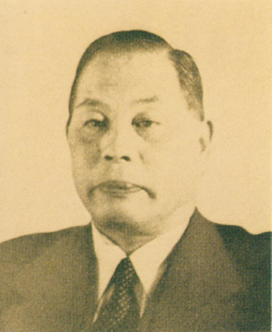Nomination for the Sawamura Awards (Best Paper Award) and Guimarães Award
(Deadline : March 18, 2024)
The Sawamura Awards will be given to the most valuable articles among all the regular articles that have been published in ISIJ International of Vol. 63 (2023), No. 1 to No.12. At the same time, the Guimarães Award will be given to the most beneficial regular article related to niobium, and the award winner will receive a prize of ¥200,000.
The corresponding author may nominate his (or her) paper by filling out and submitting the recommendation form at the following URL. The author may recommend only one article.
Papers on niobium can be nominated for the Sawamura Award and the Guimarães Award, but not for the Guimarães Prize only. The deadline for authors to submit nominations is March 18, 2024.
about the “Sawamura Award”
The “Sawamura Award” - with a biographical sketch of Hiroshi Sawamura -

Professor Hiroshi Sawamura graduated from the Department of Mining and Metallurgy of Kyoto Imperial University in July 1920 and was soon appointed lecturer in the Faculty of Engineering at the same university. He became associate professor in July 1921 and professor in March 1933 while also taking charge of the chair of Metallurgy. He delivered lectures and conducted research in the fields of ferrous metallurgy and steel science, making advancements in metallurgy while also fostering the younger generation as a dedicated educator until his mandatory retirement in 1958. From April 1962, Professor Sawamura served as dean of Kansai Iron and Steel Technical College (currently College of Industrial Technology) for eight years and dedicated himself to not only establishing and developing the college but also teaching students.
During his tenure at Kyoto Imperial University, he also served as council member and dean of the Faculty of Engineering, significantly growing and developing the institution. Off-campus, Professor Sawamura supported the development of the science and technology of steel and metals as a member of the Science Council of Japan and a specialist of the Council for Science and Technology Agency. He was also a board member of various academic societies including president of the Iron and Steel Institute of Japan (ISIJ) and vice-president of the Japan Institute of Metals. In addition, he played a leading role as a member of the 19th, 24th, 54th, and 70th committees constituted by the Japan Society for the Promotion of Science (which focused on steelmaking, casting, ironmaking, and low-grade iron ore treatment, respectively), and published numerous research reports. In particular, during his 16 years as chairman of the 19th committee from 1954, Professor Sawamura set up the steering committee, selected the most important research subjects to be pursued, and established a branched structure constituting conferences on non-metallic inclusions, steelmaking reactions, and austenitic crystal grain size and subcommittee meetings on trace elements and so on. These industry–university collaborative research studies significantly extended the activity of the 19th committee, and the research outcomes made a huge contribution in upgrading Japan’s postwar steel technology level.
Among Professor Sawamura’s immensely versatile academic achievements, the most remarkable is his work related to cast iron. Many of his research studies dealing with the effects of various chemical elements on the graphitization of white pig iron are famous worldwide because the graphitization mechanism was unknown at that time was elucidated theoretically. His other contributions include the development of a thermal treatment method of white pig iron to reduce the graphitization time, a production method of low phosphorous pig iron from common pig iron, as well as the invention of titanium cast iron of eutectic graphite structure, leading to the invention of S-H cast iron and acid-resistant high-silicon cast iron with additions of rare earth elements.
In the fields of ironmaking and steelmaking, Professor Sawamura primarily contributed to thermodynamic studies related to ironmaking and steelmaking reactions and also covered a wide range of topics such as the pre-treatment of iron ore, the desulfurization of pig iron, a series of studies on arsenic in steel, effects of trace elements on steel quality, and others.
In recognition of these achievements, Professor Sawamura was elected as a member of the Japan Academy in 1978 and awarded the Tawara Gold Medal in 1985.
In March 1988 after Professor Sawamura’s demise on December 24th 1987, his family donated 10 million yen to the ISIJ, which instituted the Sawamura Award—the best paper award—for ISIJ International, in compliance with his family’s wishes.
